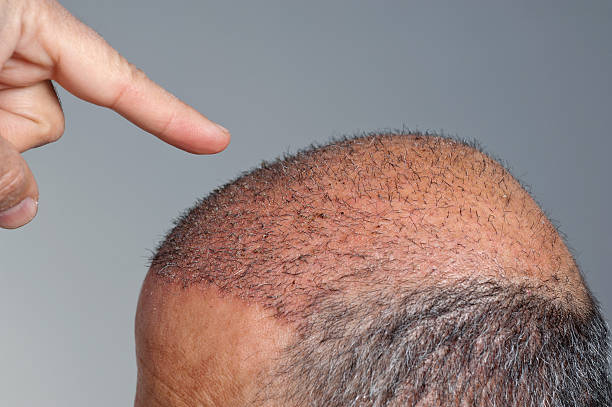Clinical markers and study endpoints for barrier restoration and follicle improvement
Clinical studies of barrier restoration and follicle improvement rely on objective markers and meaningful endpoints to show biological effect. This article outlines commonly used clinical and laboratory markers, how they map to barrier and follicle biology, and practical considerations for selecting endpoints in topical and systemic regimens.

Effective clinical evaluation of barrier restoration and follicle improvement combines molecular, biophysical, and clinical endpoints to capture change across the epidermis and pilosebaceous unit. Study design should align the mechanism of the formulation or actives with measurable markers such as transepidermal water loss (TEWL), lipidomics profiles, inflammation biomarkers, and follicle-specific outcomes. This article summarizes commonly used markers and endpoints, why they are informative, and practical choices for topical regimens and interventions.
This article is for informational purposes only and should not be considered medical advice. Please consult a qualified healthcare professional for personalized guidance and treatment.
How does the microbiome relate to epidermis and barrier health?
The skin microbiome interacts closely with the epidermis and barrier function. Clinical studies increasingly include microbiome profiling (16S rRNA or metagenomics) to track shifts in community composition that correlate with barrier recovery or dysbiosis-driven inflammation. Microbiome endpoints are useful when an intervention targets microbial balance (probiotics, prebiotics, antimicrobial peptides). Important readouts include alpha/beta diversity, relative abundance of key taxa, and functional potential (e.g., genes for lipid metabolism). Microbiome results are best interpreted alongside biophysical measures such as TEWL and visual scoring of erythema to link microbial change with physiological outcomes.
Which biophysical markers indicate barrier integrity and lipidomics changes?
Barrier integrity is commonly assessed with TEWL, skin capacitance (hydration), and corneometry. TEWL provides a direct metric of water loss through the stratum corneum and is sensitive to both acute barrier compromise and repair over weeks. Lipidomics—quantitative profiling of ceramides, free fatty acids, and cholesterol—offers molecular insight into the epidermal lipid matrix that underpins barrier function. Changes in specific ceramide classes and total ceramide content are often reported as mechanistic endpoints when formulations claim to restore barrier lipids. Combining TEWL with lipidomics and ceramide quantitation supplies both functional and compositional evidence of barrier restoration.
What follicle endpoints reflect improvement in hair and scalp biology?
Follicle-focused studies typically include hair count and density (phototrichogram), hair shaft diameter, anagen/telogen ratio, and standardized photography. Scalp biomarkers can include follicular sebum measurements, inflammatory cytokines in scalp biopsy or tape strip samples, and follicular unit histology when invasive sampling is justified. For topical actives intended to modulate follicle cycling or reduce perifollicular inflammation, endpoints should capture both objective hair metrics (density, shedding rate) and local inflammatory markers (IL-1ß, TNF-α) to demonstrate a credible biological effect.
How do ceramides, peptides, antioxidants, and other actives fit into endpoints?
Active ingredients inform endpoint selection. Ceramides and lipid-replenishing actives make lipidomics and TEWL primary endpoints. Peptides marketed for barrier support or follicle signaling may warrant molecular readouts (gene expression of differentiation markers, collagen or keratin synthesis markers) and histological evaluation of epidermal thickness or follicle morphology. Antioxidants and anti-inflammatory actives justify measuring oxidative stress markers and inflammatory mediators from skin surface samples or minimally invasive tape strips. A combination of biochemical, molecular, and functional endpoints strengthens causal interpretation of how an active alters barrier or follicle biology.
What role do topical formulation, regimen, and sebum modulation play in studies?
Formulation affects delivery, residence time, and tolerability; therefore characterization of the topical vehicle and regimen is essential. Clinical endpoints should include tolerability measures (irritation scoring), adherence data, and pharmacokinetic or deposition assessments when available. Sebum production is a relevant endpoint for scalp and follicle studies because sebum quantity and composition influence both microbiome and follicle environment. Measuring sebum along with sebum composition (lipidomics) can show whether an intervention normalizes sebum-related dysfunction linked to inflammation or follicular occlusion.
How should inflammation, nutrition, and clinical relevance be integrated?
Inflammation is a cross-cutting theme for both barrier and follicle outcomes; objective inflammatory markers (cytokines, immune cell infiltration) and clinical signs (erythema, scaling, pruritus) provide complementary evidence. Nutrition influences skin lipid synthesis and follicle cycling, so recording participant dietary patterns or relevant biomarkers (e.g., fatty acid profiles, vitamin levels) can help interpret response variability. Endpoints should be clinically meaningful—improvements in symptoms, durable changes in physiology, and patient-reported outcomes relating to function and appearance are valuable alongside laboratory markers.
Conclusion Selecting endpoints for barrier restoration and follicle improvement requires aligning the biological target, the formulation or actives, and the expected time course of effect. A balanced combination of biophysical measures (TEWL, hydration), molecular assays (lipidomics, inflammatory markers), microbiome profiling, and clinically relevant hair metrics provides a robust dataset to assess efficacy. Clear rationale for each chosen endpoint, standardized sampling methods, and integration of tolerability and regimen adherence data improve the interpretability of study results.





